Yamaha RX-A860 Review
Yamaha RX-A860 Review
Seven-channel Dolby Atmos 4K UHD home-cinema AV receiver
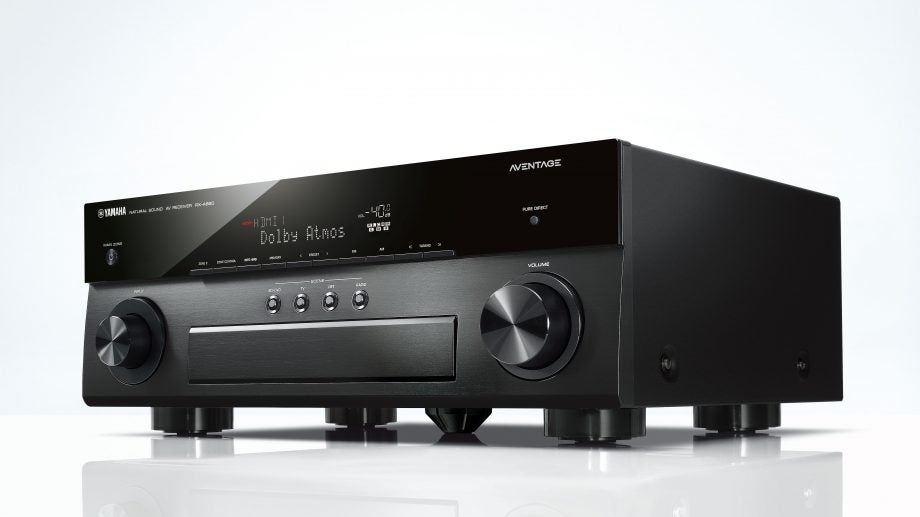
Verdict
Pros
- Smooth, musical performer
- Twin HDMI outputs
- Powerful DSP processing modes
- HDMI passthrough functionality
Cons
- Only three HDMI HDCP 2.2 inputs
- Messy user interface
- Button-tastic IR remote control
Key Specifications
- Review Price: £899.00
- Dolby Atmos and DTS:X decoding support
- MusicCast multiroom compatible
- 4K-ready HDMI inputs
What is the Yamaha RX-A860 AV receiver?
With Dolby Atmos and DTS:X immersive audio decoding on board, seven channels of very meaty amplification and MusicCast wireless multiroom audio support, Yamaha’s RX-A860 has the demeanour of an AV receiver equipped for next-generation home cinema.
As part of Yamaha’s premium Aventage range, it also benefits from top-notch build quality. Plus, with seven HDMI inputs and two outputs, it should suit the most ambitious of system builders – although there are a few niggles. For serious AV fans looking to upgrade, the RX-A860 is a tempting proposition.
Related: Best soundbar
Yamaha RX-A860 AV receiver – Build and Design
It isn’t easy to make a big AVR look svelte, but Yamaha pulls it off; this is a beautifully designed box. The split-mirrored fascia helps disguise the bulk, and the display is crisp and clear. A pull-down flap reveals front-facing HDMI, USB and analogue AV inputs.
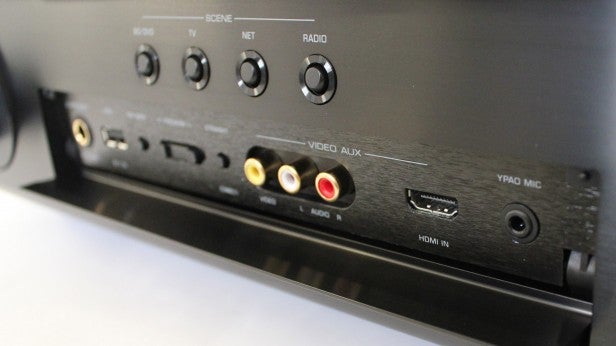
Build quality is excellent. The casing is substantial, and there’s an Anti-Resonance Technology (ART) damping foot on the underside.
Rear-side connections appear generous – although there’s nitpicking to be done. While there are seven HDMIs, only three support 4K HDCP 2.2 sources, such as Sky Q, Xbox One S and an Oppo UDP-203. Given this model costs the best part of a grand, we’d expect every input to be 4K future-proofed. At least there’s two outputs, which means you can feed both a TV and a projector.
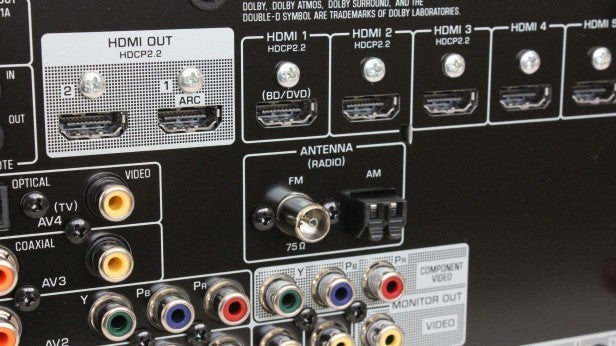
Helpfully, the receiver offers HDMI passthrough in Standby, so you don’t need to power up the system for the nightly news. You can also edit input names to suit your sources.
All-channel pre-outs open the door to extra amplification, if you want to push your system to a nine-channel configuration. There are component and analogue inputs, four digital audio inputs, split optical and coaxial, plus vinyl support. System control options include a 12v trigger, IR jacks and RS232. You can network over Ethernet or Wi-Fi, and use Bluetooth aptX for streaming.
Versatility is clearly the name of the game. Yamaha’s graphical set-up routine offers numerous loudspeaker options. We ran the AVR in a 5.1.2 layout, using two Dolby Atmos upfiring speakers; you can also specify dedicated ceiling speakers.
To combat that back-channel “hole” that can occur with a 5.1.2 Atmos layout, Yamaha also offers Virtual Rear Speaker processing for soundtracks with 6.1 or 7.1 mixes.
Related: What is Dolby Atmos?
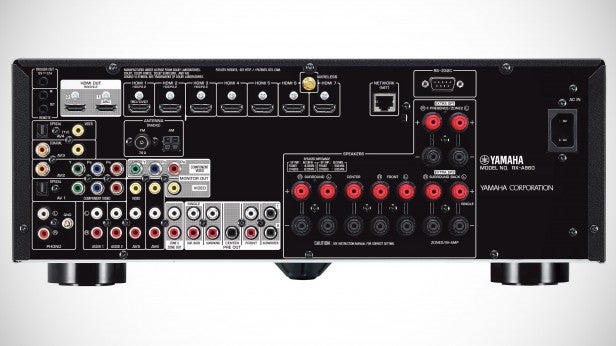
Alternatively, you can use the receiver in a classic seven-channel surround layout, with rear and back surround speakers; or 5.1, with two front presence speakers; or a 5.1 system, with a separate stereo for a second listening zone. There’s even an option to position your rear surround speakers alongside the main L/C/R – but, obviously, that would be daft.
There are no changes to the Yamaha on-screen user interface for 2017. Boxes still pop up all over the screen for no good reason. The supplied infra-red remote is button-heavy, but you can use an app for iOS and Android.
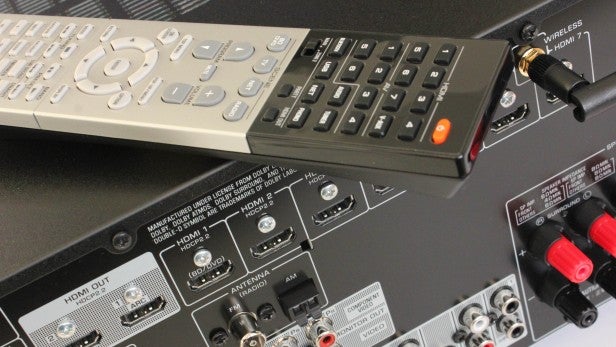
Yamaha RX-A860 AV receiver – Features
Room tuning is simplified by Yamaha’s YPAO room-calibration system. Why would you want to use YPAO? Since it helps compensate for all those acoustic nasties of which you probably aren’t aware.
With YPAO, you can measure up to eight listening positions (presumably for those with really big sofas).
Cinema DSP remains a huge deal for Yamaha. Movie Theatre mode alone has six presets (Spectacle, Sci-Fi, Adventure, and so on), while Home Entertainment adds four more (with Music Video and Action Game among them). These DSP modes may be a matter of taste, but they’re certainly worth experimenting with as they come in a surprising variety of flavours.
To listen to the native surround format of your source, select Straight from the on-screen DSP menu. If there’s no height component in the mix, the Dolby Surround adds some.
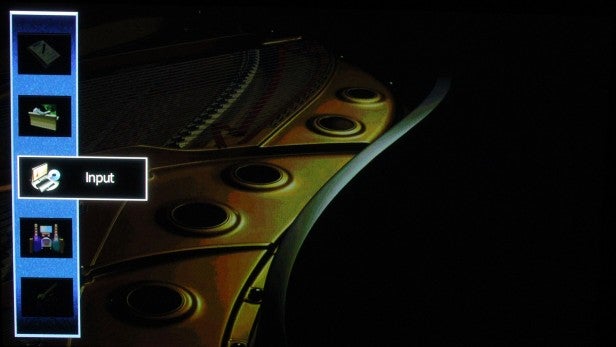
You can stream audio over Bluetooth from your mobile device, or pair headphones for late-night listening. That said, we prefer the Silent Cinema (virtual surround) listening mode for wired cans.
The RX-A860 also offers Apple AirPlay and Spotify Connect. Since this is a receiver, there’s an FM tuner – although quite why anyone would want to use it over internet radio is a mystery.
Yamaha RX-A860 AV receiver – Performance
For this review, we ran a standard Dolby Atmos layout, which is to say a 5.1 base layer with two height channels – and pretty much grinned from the get-go.
Amplification is rated at 100W into 8 ohms, and that doesn’t feel like hyperbole. The RX-A860 has wonderful dynamic attack that revels in big blockbuster movie soundtracks.
It takes a sonic juggernaut such as Insurgent (Blu-ray), and turns it into a Dolby Atmos masterclass. Action is steered from the front and back, gunfire rattles high and low. When it wants to drop low, there’s sledgehammer LFE.
It’s also silky-smooth with High-Res Audio files. Audio playback can be routed via an Enhancer for low bit-rate fare, while Pure Direct keeps things native. File compatibility includes FLAC up to 192kHz-24-bit and DSD to 5.6 MHz.

Dolby Surround height-mixing transpires to be quite subtle. It’s like Pro Logic reinvented. All the 5.1 mixes we used it with appeared to benefit, from Fortitude on Sky Q to Luke Cage on Netflix. The process even adds extra space to stereo sources.
DTS:Neural:X does much the same job with 5.1 DTS:HD MA soundtracks. However, opting for Dolby Surround or Neural X defeats the receiver’s Virtual Presence Speaker processing.
The receiver’s MusicCast multiroom functionality works well. Once paired to the MusicCast Controller app, we were able to stream audio to a second MusicCast component – a Yamaha MCR-N470D micro-system – in another room. The two units stayed perfectly in sync, although DSD files played on the RX-A860 weren’t recognised by the micro-system. All other formats streamed just fine.
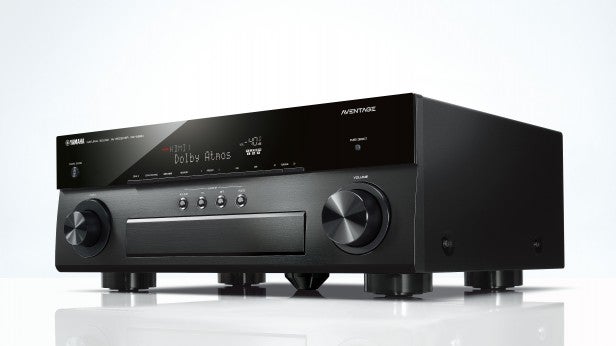
Should I buy the Yamaha RX-A860 AV receiver?
The RX-A860 is a sensational sounding seven-channel amplifier, with both the muscle and dexterity to service big action movies and High Res Audio. The inclusion of MusicCast wireless multiroom support is the icing on the cake.
The lack of universal HDMI HDCP 2.2 support is a frustration, but that shouldn’t distract you from its 3D audio talents, or musical capabilities. The RX-A860 very nearly gets everything right.
Verdict
The RX-A860 is a superb AV receiver, great for both music and movies.


